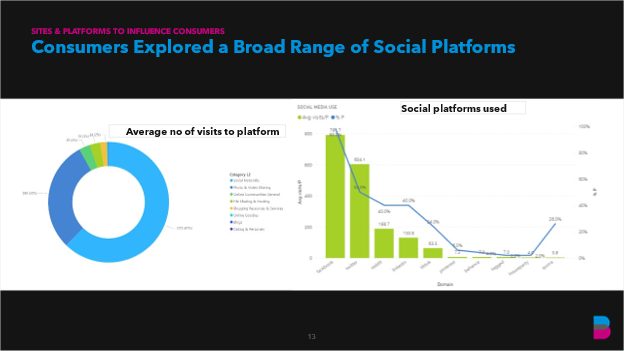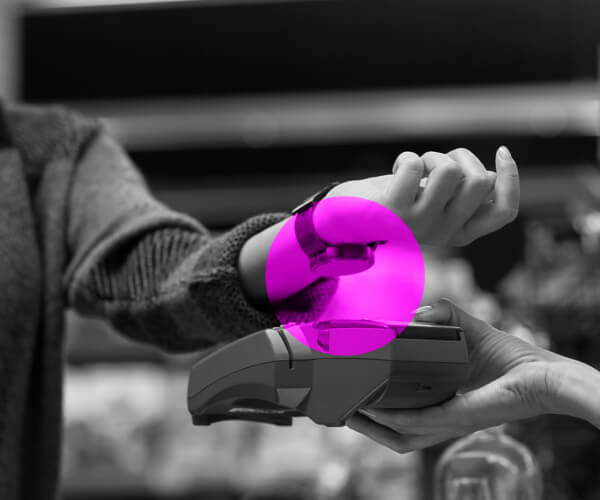In a perfect world, your product is always top-of-mind with consumers. But the reality is: consumers don’t spend every waking hour thinking or interacting with your brand before they engage in a purchase. To say that consumers have “relationships” with brands, despite marketing rhetoric, is probably the wrong metaphor.
Consumers may indicate that they want brands to stand for something. And they want the products they buy to meet criteria that increasingly goes beyond function and price to values like “authenticity” or “sustainability”. But how and when they actively think about your products or your company is a very small percentage of time spent in their lived experiences. The key for brands is to be able to identify opportunities in which they can influence consumers when they are consciously engaged in the instances leading up to that key moment when their choice drives a purchase.
Most aspects of consumers lives don’t include your brand, category, or products. What shapes their attitudes, behaviors, purchase drivers, and decisions are the cumulative experiences of physical and digital touchpoints along their path-to-purchase. These may have nothing to do with the choice itself, but everything to do with understanding and influencing their shopper journey so the choice of your brand is made.
In fact, understanding your shopper’s activity in the physical and digital world before they are in the moment of choice is the best way to identify those instances along the shopper journey in which you can optimize the potential to influence purchase choice to your advantage.
Our team recently conducted some research on behalf of a client in the personal care space to understand attitudes and behaviors regarding products with a promise of “natural” in both ingredients sourced and functional benefit in a key audience of young urban consumers in the client’s target geography.
What did that shopper look like? Could we get a more three-dimensional view of who they are and identify how and where to influence their behavior?
Using our OmniPath® approach, we were able to clarify the path-to-purchase in the category with specificity to identify tangible, emotional, and digital tactics for influencing choice based on their target audience’s social media behaviors. The client is leveraging the results of the work to inform their consumer engagements strategies.
By combining big data analysis, mapping of personal journeys, passive tracking of digital visits plus search activity, and behavioral surveys to validated observed learnings, we were able to paint a detailed picture of the consumer using multidimensional data as ink.
This “data ink” used to paint the picture of the consumer and their path to purchase included observed activity in social media, blogs, photo plus video sharing, online communities, and file sharing. Facebook was a powerful influence to this audience, who also had a penchant for binge watching on Netflix. We were even able to determine the time of the week (Wednesdays) when they were most likely to be scrolling and liking on social media platforms – very relevant insight to inform our client’s social media engagement strategy.

How Passive Tracking Works
Our OmniPath passive tracking tool is a GDPR compliant, permission-based approach that downloads click-stream and media consumption data from target consumers to uncover learnings on real behaviors, compelling touchpoints, and shopping activity. Data analyzed includes:
- Websites and retailers visited during the path-to-purchase
- Relevant search terms used and products viewed
- Specific pages visited within retailer websites
- Websites visited before and after shopping at the retailer
- Media, including social media consumption
When married to the passive tracking data, quant survey results can determine intent for the search as well as branded sites searched and referral sites responsible for results.
The insights gleaned in our personal care category study also revealed the impact of product reviews and price in addition to the other influencers in the shoppers’ decision trees regarding “natural” as an attribute for their purchases.
Mapping the Digital Roadmap to the Omni Shopper Journey
To bring it all together, we mapped the multidimensional shopper journeys of several “typical shoppers” to illustrate a composite online, in store, and on social interactions that led (or did not lead) to a purchase.
In nearly every category, understanding the 3-dimensional digital road-map for the contextual influencers of behavior can help you formulate shopper marketing strategies with the greatest potential for success: where your consumers are when they are not engaged directly with you and where you can connect with them once they are definitively pursuing a purchase that could involve your product, requires the integration of many data points of observed behavior, and the experience to interpret that data in a behavioral context knowing how shoppers reach purchase decisions.
If you have a complex shopper engagement challenge, that requires a 360 view of your consumers’ path-to-purchase, let us help you build winning marketing strategies with OmniPath® by contacting us.
 THE AUTHOR
THE AUTHOR
Nisha Yadav is the Senior Vice President, Omni Shopper Lead at Behaviorally. She has over 15 years of experience as a marketing strategist offering insight-led, brand, product, and customer strategy to storied brands. Before joining Behaviorally, Nisha led Global Brand Research at MetLife and her career includes progressive roles leading marketing insights and strategy teams on the agency and client-side alike.
